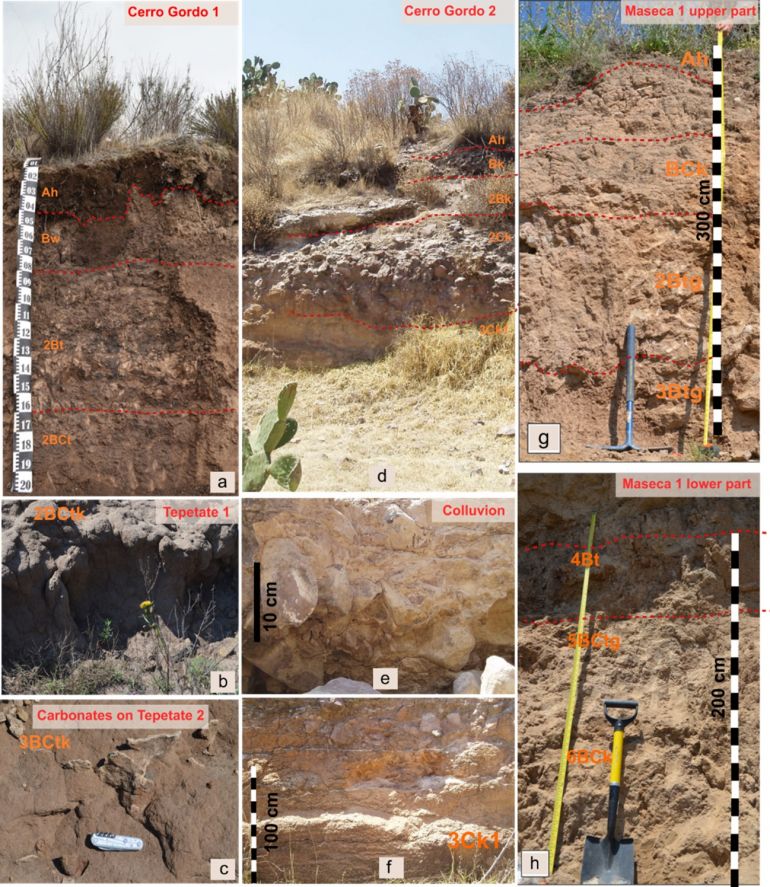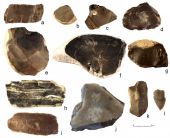The Spotlight #9
Posted by Unknown in ECR News on 13 Jul 2022
In the July issue of “The Spotlight” we explore the paper by Valera Fernández and co-authors, entitled “Provenance, and environment context of pedogenic carbonates formation from MIS 3 to MIS 1 in the Teotihuacan Valley, Mexico”. Link to the paper.
The research
In arid and semi-arid regions, evaporation processes led to calcite accumulation and the formation of pedogenic carbonates; as a consequence, soil profiles comprise calcic and petrocalcic horizons. In this paper, 3 paleosol profiles from the Teotihuacan Valley (Mexico; Figure 1, 2) were analyzed to derive a paleoenvironmental reconstruction. Methods include micromorphology, scanned electron microscopy (SEM), radiocarbon dating, mineralogical and geochemical analyses.

Figure 1: a) Location of the Teotihuacan Valley in the Transmexican Volcanic Belt (TVB) and the studied profiles (green dots); (b) Topographic transect A-A′, with the location of the studied profiles: Cerro Gordo (CG); Cerro Gordo 1 (CG1), Cerro Gordo 2 (CG2), San Pablo (SP) and Maseca 1 (MAS 1).
Pedogenic carbonates tell a story about their origin (provenance); in the case of the investigated sections, micromorphological analyses (Figure 3 shows an example of thin section) allow to identify as the main source of Ca and Sr for carbonates the rocks of the Transmexican Volcanic Belt; aeolian contribution is instead minimal.

Figure 2. Teotihuacan Valley studied profiles, a) The Cerro Gordo 1 general profile view (top part: A, Bw, 2Bt, 2BCt), (b) tepetate (2BCtk horizon) (c) carbonates infilling cracks, d) The Cerro Gordo 2 general profile view (e) Colluvium of andesitic-basaltic rocks dividing the horizons 2Ck and 3Ck1, (f) tepetate (3Ck1 horizon), (g) The Maseca Profile, upper part of the showing the modern soil and the first palaeosol ,(h) lower part of the profile.

Figure 3: Photomicrographs. (a) micritic and sparitic crystals cemented clay coatings fragments (3BCtk horizon in Cerro Gordo 1 profile, (b) needle-fiber of calcite in tubular pores of the MS1 sample (XPL)(Maseca1 Profile), (d) MS3 carbonate nodule sample made almost entirely of sparite crystals (XPL) (Maseca 1 Profile) d) Rhizocrete nodule sample, MS4, composed of different generations of micrite and sparite cements and little presence of soil fragments (PPL) )(Maseca1 Profile).
Why should we care?
Pedogenic carbonates are important indicators of past climatic changes; additionally, the morphology of calcium carbonates is a way to chronologically correlate profiles in different regions/areas. Studying paleosol profiles allows to reconstruct the changes that affected a region on a timescale of 10.000s years, thus providing the grounds on which analyze the current status and evolutive tendencies in the foreseeable future. For instance, the present research identified a higher proportion of C4 plants in the Holocene with respect to the Pleistocene; this is consistent with a ca. 3°C increase in modeled paleotemperatures.
Gaining information on past climatic and environmental evolution is paramount for achieving more informed and conscious decisions.
The Author
Daisy Valera-Fernández has recently finished her Ph.D. at the Institute of Geology, National Autonomous University of Mexico (UNAM). Currently, she is a postdoctoral researcher at the Department of Magnetism and Exploration of the Institute of Geophysics (UNAM). Her research interests are pedogenic carbonates, paleosol magnetic mineralogy, karstic environments, and paleoenvironmental reconstruction. She is an active member of the Mexican Soil Science Society.
Contacts: dvaleraATigeofisicaDOTunamDOTmx, RGatePost written by Francesca Ferrario, Terpro ECR Representative.




